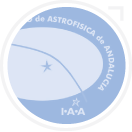WP02. Subsurface Reservoirs and Transport of Trace Gas Species
General Objectives:
- Identify the possible zones of ice and clathrate deposits in the Martian surface
- Quantify the diffusion of trace gases from these sources in Martian subsurface to the surface
- Determine the sensivity to surface properties for the resulting transport in the atmosphere
Responsible:
M. Patel (OU)
Participants:
OU, ORB, UCM
Scientific Background:
Processes active in the subsurface of Mars are currently inaccesible to conventional instriments, but subsurface processes may produce emission of trace gases into the atmosphere, observable with current or future instruments. Observing and understanding the production of these gases requires a holistic understanding of their transport from the subsurface to the atmosphere. UPWARDS aims at creating a ground-breaking en-to-end link between locations of subsurface ice/clathrate deposits (which can trace gases), their destabilisation and the subsequent material transport to the surface and atmosphere. Read more.
Scientific Impacts:
This work will result in the construction of a global surface heat flow model for present-day Mars. We will construct maps of ice table locations in the Martian subsurface, which will be made available to scientists and engineers. These data will be of use for future mission planning and exploration, for both scientific investigation and in situ resource utilisation for future long-term exploration. We will also produce updated estimates of ice table depth for past epochs, which will permit a more detailed investigation of the evolution of the thermal state of the cryosphere, and their comparison with geological structures.

Manish Patel (OU) - WP.02 Responsible
UPWARDS will produce new and innovative data to describe the flux of trace gas through the surface layer, again of relevance to future exploration from the perspective of searching for subsurface activity at the surface. We will produce publically available datasets describing maps of subsurface ice and clathrate possible regions, along with profiles detailing the lifetime of trace gases as a function of varying surface compositional parameters.
Combining the results of these tasks with future observations of trace gas release will also allow us to begin to probe aspects of activity in the Martian subsurface and make a link between active processes in the crust, currently inaccessible to present-day instrumentation and the atmosphere, where they can be observed by instruments such as the NOMAD instrument (Nadir and Occultation for Mars Discovery) on the ExoMars TGO, due to launch in 2016.

This work will also be crucial to interpreting data returned from the NASA InSight mission in 2016, which will probe the interior of Mars (subsurface physical measurements will further inform the subsurface model). Thus these tasks will exploit an array of existing Mars data in a novel manner, and prepare the scientific community for exploitation of new unexplored areas of Mars for future missions. They will also help to select the best areas possible on Mars for a future Sample Return mission.

































